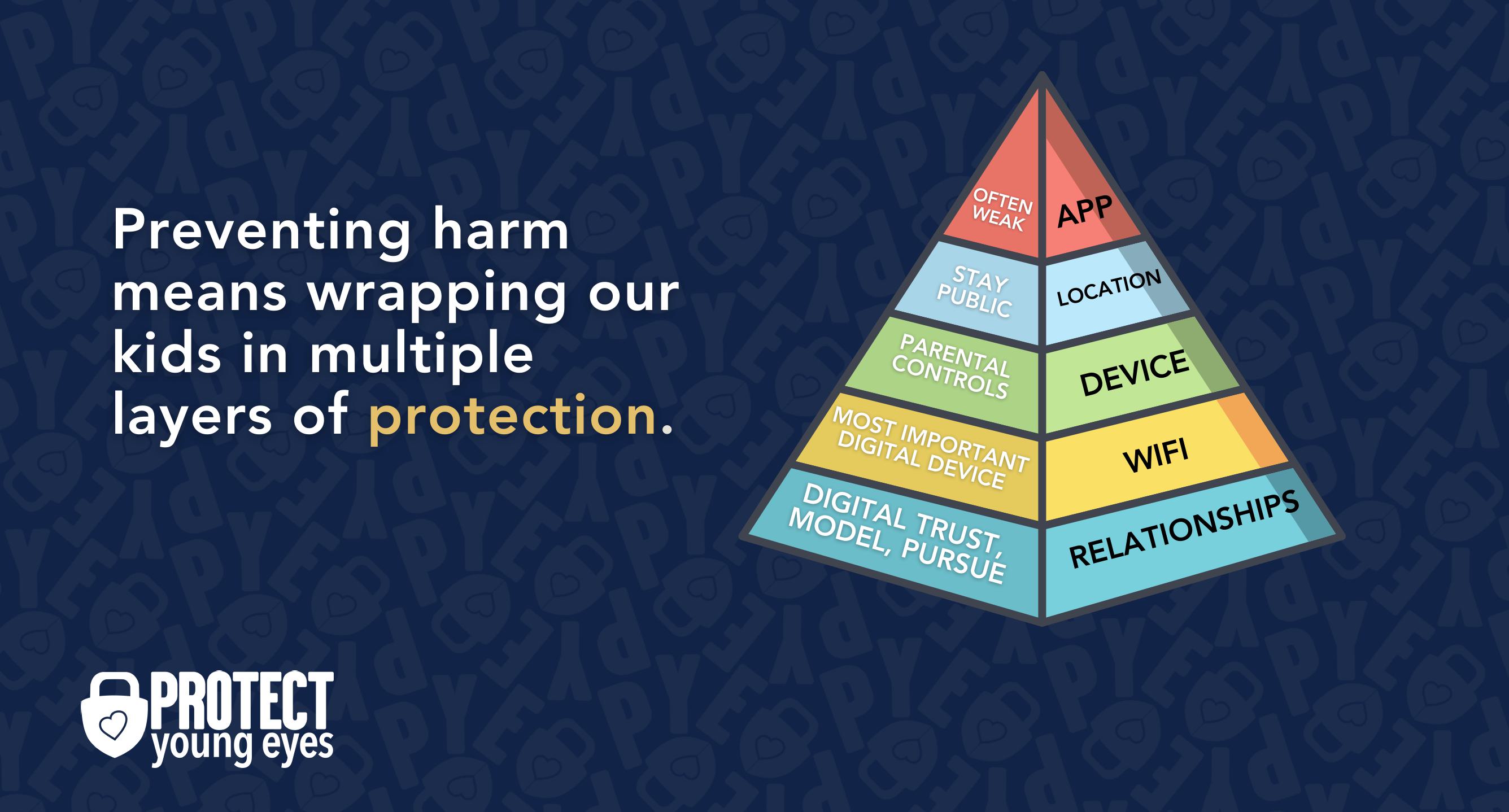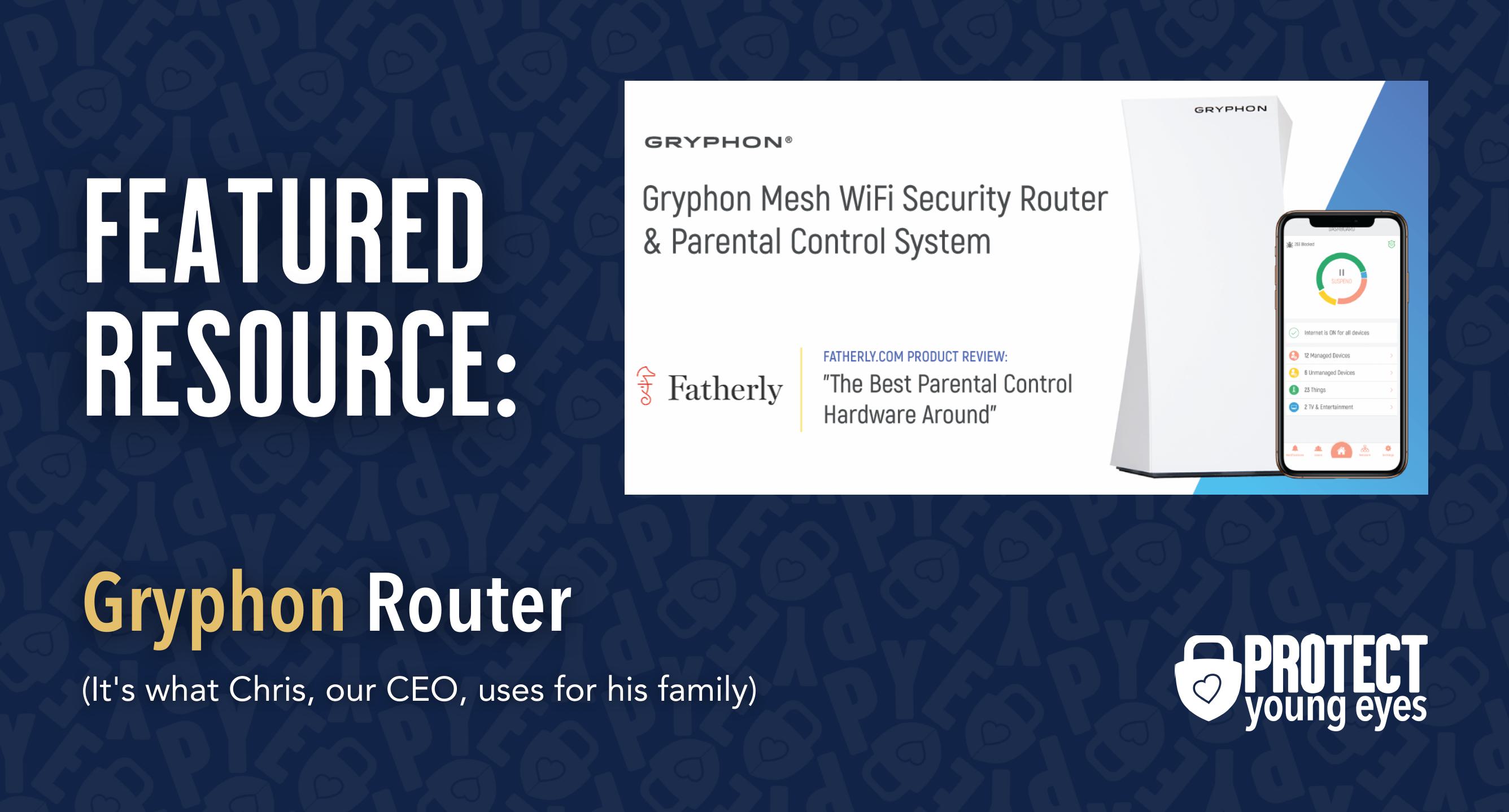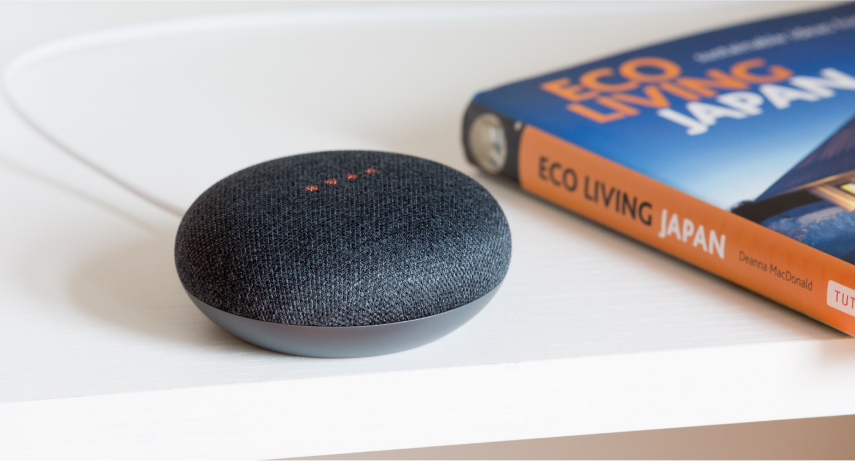Join the Movement - Sign the Delay Manifesto 📑

The Complete Guide to Google Home Parental Controls
Guard your Google Home Device with Layers
We believe the best way to prevent digital harm on all digital devices is by following our 5 Layers of Protection:
Layer 1: Relationships
Layer 2: WiFi (Router)
Layer 3: The Google Home Device
Layer 4: Location
Layer 5: App

In a digital world that is increasingly hostile toward children, our response must be strong and relevant. That's why we believe in wrapping our kids in multiple layers of protection. One or two are often not enough.
Layer 1: The Relationship (Build Digital Trust)
To learn why our relationships with our children are the foundation of protection and how to build digital trust (Layer 1), here are relevant blog posts:
- 10 Before 10: Making Porn a Normal Conversation
- How to Talk to a 5-year-old About Porn
- Tricky People -Stranger Danger in the Digital Age
- What is Sextortion? A Prevention and Response Guide for Families
- Why Kids Look at Pornography
Layer 2: WiFi (Router)
The Router is the most important digital hardware in the house! And, it’s often the most ignored. But, you are responsible for every digital click on your home’s network, so monitoring and controlling its activity is important.
Popular options for parents are:
- Gryphon Advance Security & Parental Controls router. This is the router used by our CEO, Chris, with his four children. It gives you time control, YouTube Restricted Mode, and more. Easy set-up and a parent app that allows you to pause the internet with one touch.
- Alternatively, if you love your current router, but simply want to exert more control over it, then we recommend Bark Home. It connects to your router, giving you stronger parental controls over your home’s network. It’s not a router, but connects to your router. Easy-to-use app for you to exert screen time and app control over your kid.

Bonus content – we tested the best routers out there and here’s WHY we picked Gryphon.
Layer 3: The Google Home Device
Google Home is a Wi-Fi speaker that also works as a smart home control center and an assistant for the whole family utilizing Google’s artificial intelligence (A.I.)-supported Google Assistant.
[NOTE:] Google is branding their Home products under the Nest moniker.
You can use it to playback entertainment throughout your entire home (YouTube, music, movies), effortlessly manage everyday tasks, and ask Google things you want to know. Prices start at just $29 for the mini-Home device which is similar to its primary competition, the Amazon Echo.

AI Intergration: Gemini in Google Home
Before we get into all the controls, it's important to note that Google recently integrated their AI (Gemini) into Google Home.
To disable Google Gemini:
- Open the Google Home App
- Tap "Google Home / Nest" device you want to manage
- Tap the gear icon (Settings) -> Google Assistant or Recognition & Sharing -> Toggle Off Google Assistant
Google Home Parental Controls
By linking your Home device to your Google account, you have the ability to enable a few parental controls that should prevent most kids from accidental access to inappropriate voice-activated content. As a default, Google Home bleeps out most common swear words.
How the Google Home is better than the Amazon Echo
Enable Digital Wellbeing controls on the Google Home Assistant.
We don’t need to recreate the wheel, so we’re going to send you to this blog post from The Ambient with details about Digital Wellbeing. This is the Google response to the growing outcry to unplug from digital devices.
Use your kid’s voice to create their own account.
This feature utilizes the Family Link set-up in our updated Family Link Parental Controls blog post. You’ll need two devices in addition to the Google Home device to make this work:
- A parent smartphone where you’ve downloaded the Google Family Link for parents app.
- A second device (Android smartphone, tablet, or Chromebook), where you’ve set up a Family Link account for your child. If you don’t know how to set up a Family Link account for your child on one of these devices, you can follow our instructions.
After you have your child’s Family Link account set up on the second device, which now means that it shows up within your Family Link for parents app on your device, then you’re ready to roll.
Here’s how to set up Google Home to recognize your child’s voice:
- In your Family Link for parents app, tap your child’s account.
- Tap the three, vertical dots in the upper right corner of your child’s account.
- Tap Sign in to Google Home.
- Walk through the setup. Here you can choose which devices will be able to recognize your child’s voice – and which won’t.
- Go through the voice set-up and you’re all set.
Once you’ve linked your Google Home, you’ll see it appear in the Family Link for parents app on your smartphone. Tapping on it will let you make a couple of changes.
How to restrict a child’s access to third-party apps on Google Home:
- Open the Family Link app for parents on your phone. Tap Manage Settings.
- Tap Google Assistant.
- Toggle “Third-party apps” to off.
Good! Now, keep going with a few more steps.
Turn off Pay with Assistant.
How to prevent your child from making unnecessary purchases on Google Home:
- Open the Google Home app and select Settings for the speaker you want.
- Scroll down and tap on More.
- Tap on Payments then simply toggle ‘Pay with your Assistant’ to off.
Turn on YouTube Restricted Mode.
Kids aren’t watching videos through Google Home, but they can listen to music through YouTube Music. These steps will control the overall device, regardless of who is using it.
If you set up your child’s voice-activated access above, and their account is for age<13, then Family Link will restrict them to YouTube Kids only.
How to restrict music listening in Google Home:
- In the Google Home app, hit the Menu button at the top left corner.
- Tap on More settings.
- Select the device you want to put the restriction on.
- Scroll down to where it says YouTube Restricted Mode and toggle it on.
Google Support Page: Play YouTube using Google Home
Google Support Page: Control Restricted Content Help Page
Protect Young Eyes: Ultimate Guide to Youtube for Caregivers
Exclude explicit songs in Google Play.
How to prevent songs with explicit lyrics in Google Home:
- Go to the Youtube Music site and sign in with the account used on your Google Home.
- Click the menu button at the top left and tap on Settings.
- Scroll down to the ‘General’ section where you’ll see an option to “Block explicit songs in radio.” Click the checkbox.
Layer 4: Location (It matters)
Guard the location of the device. Why? Because where kids use technology often dictates how they use their technology.
Related post: The 5 Worst Places for a Kid to be Online
We have strong opinions about managing where kids use their tech. For example, let’s keep all internet-ready devices out of bedrooms at night, where kids take more risks, and sleep is constantly interrupted.
Just know that the combination of boredom, bedrooms, and darkness (the Toxic Trio) often lead to bad digital choices, whether you’re 14 or 40 years old!
Layer 5: Apps
To learn why apps are often the least protected digital spaces and how to set them up safely (Layer 5), here are popular app reviews:
Finally, what about privacy?
Common Sense Media does the best job breaking down privacy for smart speakers like Google Home. They state the following in their Google Assistant Privacy Review:
“Google’s terms state they collect information about a child’s activity in their services, which they use to do things like recommend apps they might like on Google Play. A child’s activity information that they collect may include things like search terms, videos they watch, voice and audio information when they use audio features, people with whom they communicate or share content, and Chrome browsing history they’ve synced with their Google Account. If a child uses Google’s services to make and receive calls or send and receive messages, for example by using Google Hangouts, Google may collect telephony log information like their phone number, calling-party number, receiving-party number, forwarding numbers, time and date of calls and messages, duration of calls, routing information, and types of calls.”
“The terms state Google may use users’ personal information to provide third-party marketing, but disclose they do not sell users’ personal information to third parties. In addition, the terms state Google may display targeted advertisements to users, but that users can modify their interests, and choose whether their personal information is used to make ads more relevant to them, and turn on or off certain advertising services. The terms also state that Google allows specific partners to collect information from a user’s browser or device for advertising and measurement purposes using their own cookies or similar technologies.”
Here are 2 steps you can take to enhance privacy on your Google Assistant device:
- Browse or delete your Google Assistant search data and voice data.
- Opt out of targeted ads.
Both can be performed by following the steps on this page.
What if I have more questions? How can I stay up to date?
Two actions you can take!
- Subscribe to our tech trends newsletter, the PYE Download. About every 3 weeks, we’ll share what’s new, what the PYE team is up to, and a message from Chris.
- Ask your questions in our private parent community called The Table! It’s not another Facebook group. No ads, no algorithms, no asterisks. Just honest, critical conversations and deep learning! For parents who want to “go slow” together. Become a member today!

A letter from our CEO
Read about our team’s commitment to provide everyone on our global platform with the technology that can help them move ahead.
Featured in Childhood 2.0
Honored to join Bark and other amazing advocates in this film.
World Economic Forum Presenter
Joined a coalition of global experts to present on social media's harms.
Testified before Congress
We shared our research and experience with the US Senate Judiciary Committee.















